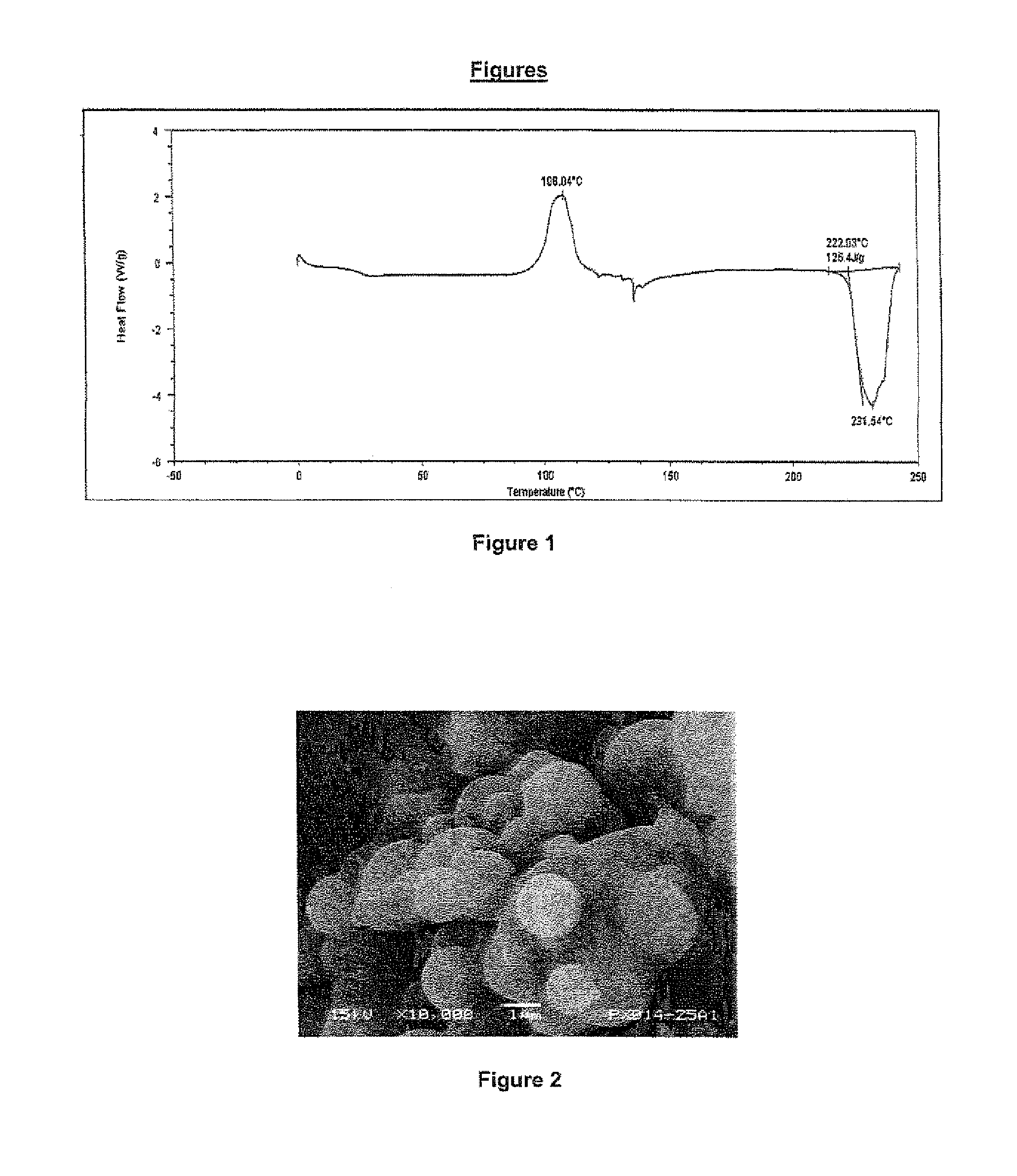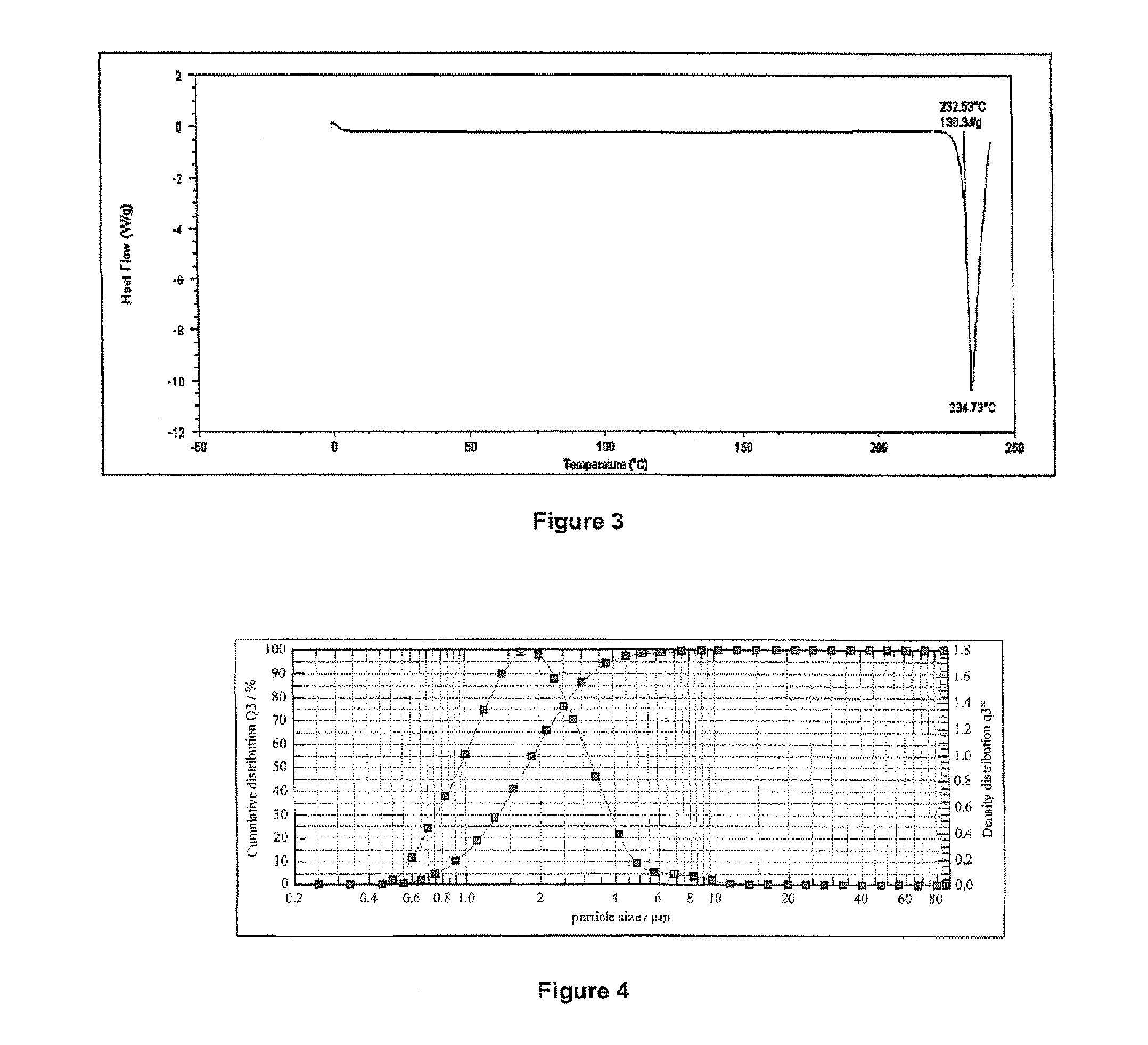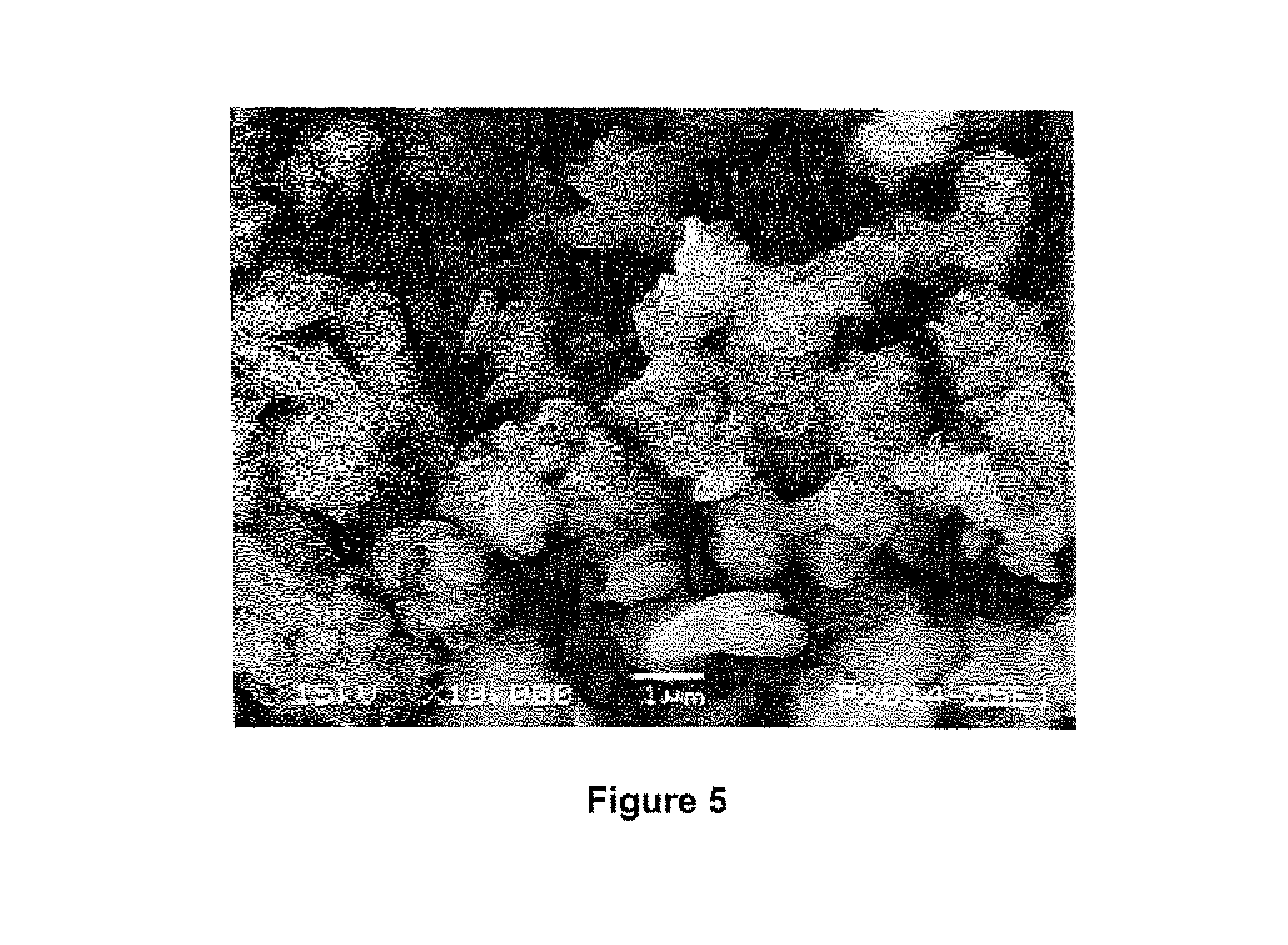Barrier composition
a barrier and composition technology, applied in the field of barriers, can solve the problems of affecting the material properties of milled particles, forming amorphous structures unsuitable for end-use applications, and a significant proportion of particles, so as to reduce the amount of agglomerated particulate materials, increase the crystallinity of solid materials, and reduce the amount of agglomerated particles. the effect of agglomeration
- Summary
- Abstract
- Description
- Claims
- Application Information
AI Technical Summary
Benefits of technology
Problems solved by technology
Method used
Image
Examples
example 1
Fenoterol Hydrobromide for Inhalation
[0179]Fenoterol hydrobromide (5 g) was dissolved in 100 mL of methanol. The samples of Fenoterol hydrobromide powder collected in the ultrasonic chamber were produced using a Büchi-290 laboratory-scale spray dryer (Büchi, Switzerland). The solution was atomized using nitrogen at 7 bar flowing at approximately at 10 Lpm (Liter / minute). The aspirator was set at 100% and flow rate of solution was set to 10 Lpm. The gas temperature was set to 120° C. Fenoterol hydrobromide particles were collected from both the cyclone separator and the PTFE bag filter assembly. The resultant amorphous particles contained 3000 ppm (0.3% w / w) residual methanol. The particles were placed into an ultrasonic chamber fitted with a 20 kHz ultrasonic transducer on its base (Prosonix SL 10) as shown in FIG. 8. The chamber was heated to 40° C. using a thermoregulated water jacket. Ultrasound at 20 W power was applied between 30 minutes and 2 hour. The resulting particles were...
example 2
[0181]Budesonide (4 g) was dissolved in acetone (100 mL) and the solution spray dried using a Büchi-290 laboratory-scale spray dryer (Buchi, Switzerland). The solution was atomized using nitrogen at 4-4.5 bar flowing at approximately at 10 Lpm (Liter / minute). The aspirator was set at 100% and flow rate of solution was set to 15-17 Lpm. The inlet gas temperature was set to 70-75° C. and the corresponding outlet temperature was 38-42° C. Budesonide particles were collected from both the cyclone separator and the PTFE bag filter assembly.
[0182]The spray dried budesonide was then transferred to ultrasonic sieve assembly. The system comprises of common laboratory ring sieves (according to DIN ISO 3310 / 1 or ASTM E 11-95) with diameters of 200 mm or 8 inch. A ring 24 kHz sonotrode that fits around the sieve is excited by the ultrasonic processor UIS250L (supplied by Hielscher). The ring sonotrode (RIS) transmits the oscillation via the sieve frame to the screening surface. With the help of...
PUM
| Property | Measurement | Unit |
|---|---|---|
| mass median aerodynamic diameter | aaaaa | aaaaa |
| diameter | aaaaa | aaaaa |
| diameter | aaaaa | aaaaa |
Abstract
Description
Claims
Application Information
 Login to View More
Login to View More - R&D
- Intellectual Property
- Life Sciences
- Materials
- Tech Scout
- Unparalleled Data Quality
- Higher Quality Content
- 60% Fewer Hallucinations
Browse by: Latest US Patents, China's latest patents, Technical Efficacy Thesaurus, Application Domain, Technology Topic, Popular Technical Reports.
© 2025 PatSnap. All rights reserved.Legal|Privacy policy|Modern Slavery Act Transparency Statement|Sitemap|About US| Contact US: help@patsnap.com



